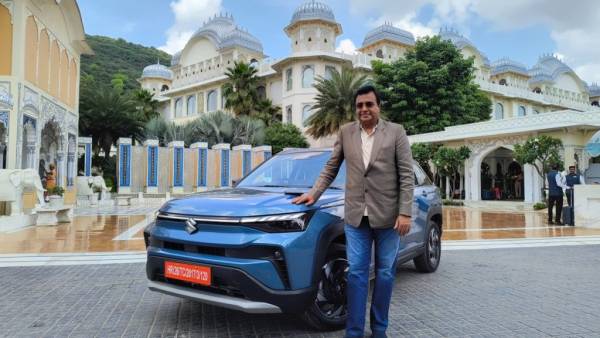
Even while stuck in traffic, my test car – a strong hybrid – is clocking 27 km/litre. The cabin is quiet, as the car is running on electric motor. Escaping the jam, I floor the accelerator; the petrol engine roars to life alongside the electric motor, and launches the car ahead. At the next red light, the petrol engine shuts down, but the electric motor keeps the AC running.
“Isn’t this a great technology,” says my copassenger Partho Banerjee, senior executive officer of Marketing & Sales at Maruti Suzuki India, as we drive the new Victoris SUV on roads around Jaipur. “Strong hybrid is a stepping stone towards electric vehicles (EVs), and is vital until the EV infrastructure matures broadly in India.”
Despite it being a bridge to electric mobility, the recent GST reforms haven’t offered incentives for strong hybrids – these cars have engines bigger than 1,200 cc, and thus are taxed 40%, unlike EVs that attract just 5% GST – and yet Banerjee says Maruti Suzuki’s commitment to hybrids remains strong. “In addition to being a bridge towards EVs, hybrids are a longterm solution for India’s diverse market,” he says. “We believe in a multitechnology path for decarbonisation, where various fuels and powertrains will coexist.”
The Victoris seems to be a perfect example of that multifuel pathway – it’s available in petrol (Rs 10.5 lakh to Rs 19.22 lakh), CNG (Rs 11.5 lakh to Rs 14.57 lakh), and strong hybrid (Rs 16.38 lakh to Rs 19.99 lakh).
Wherever we drive it to, the Victoris turns heads. The front looks like Volkswagen ID range of electric cars, and the rear design – with a LED light bar connecting the taillights, and pixelpattern lamps – resembles the Kia EV6, giving it a sporty coupelike vibe. Side profile is bold, with squaredoff wheel arches.
It’s available in funky colours – my test car is called Eternal Blue – and has attracted 25,000 bookings within days of launch.
“I believe the youth are going to love it,” Banerjee says. “The Victoris is aimed at filling a white space unserved by us – SUVs tailored to Gen Z’s lifestyle preferences. Features such as ‘Theatre on Wheels’, digital connectivity dubbed ‘Tech Lab on Wheels’, and design choices like relocating the CNG tank to maximise boot space were all developed with active lifestyles in mind.”
As I drive the Victoris on a national highway, a Hyundai Creta N Line – powered by a turbocharged engine – flies by. The Victoris – despite its dual power of electric and petrol – feels lacking, but Maruti Suzuki seems confident on capturing the leadership position in the midsize SUV segment, a space led by the Creta.
Banerjee says that with close to 4,000 Arena outlets selling the Victoris catering to youthful buyers, and over 600 sophisticated Nexa showrooms selling the Grand Vitara, it’s a matter of time when Maruti Suzuki leads the midsize SUV segment with these two models. “It will take some time, but we will get there,” he says.
Reflecting on the recent GST 2.0 tax reforms, Banerjee acknowledges benefits for all automakers. While bigger cars enjoy significant absolute tax reductions, Maruti Suzuki’s compact, sub4metre vehicles with smaller engines also stand to gain substantially. But regarding sales forecasts, he cautions in interpreting next quarter figures due to a temporary purchase delay as customers awaited the tax benefits, but predicts that a clearer effect of the reforms would emerge in the next financial year.